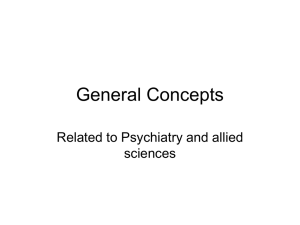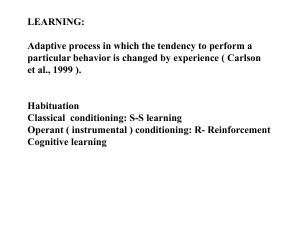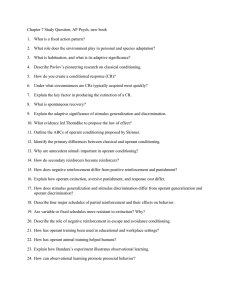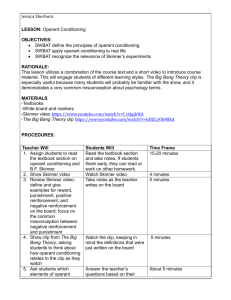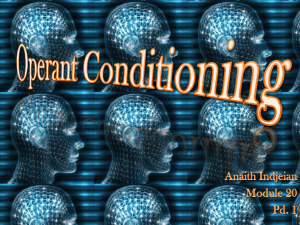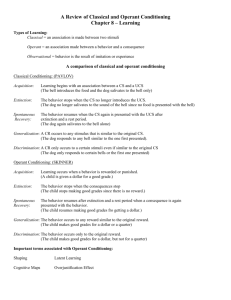GRQchapt6part2
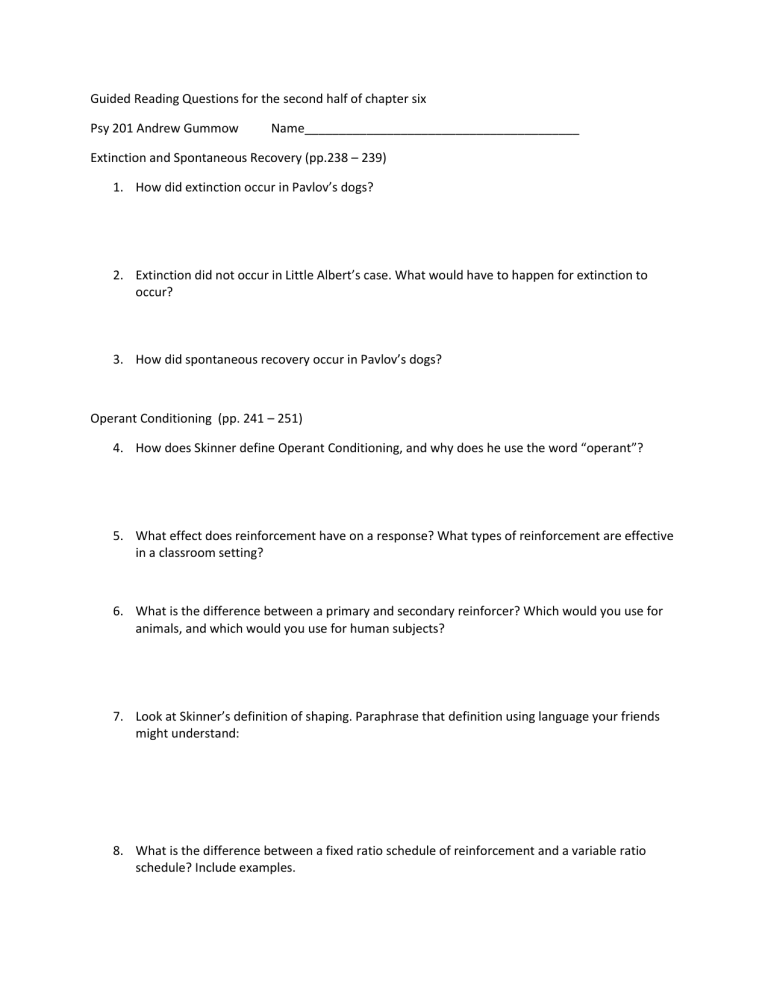
Guided Reading Questions for the second half of chapter six
Psy 201 Andrew Gummow Name________________________________________
Extinction and Spontaneous Recovery (pp.238 – 239)
1.
How did extinction occur in Pavlov’s dogs?
2.
Extinction did not occur in Little Albert’s case. What would have to happen for extinction to occur?
3.
How did spontaneous recovery occur in Pavlov’s dogs?
Operant Conditioning (pp. 241 – 251)
4.
How does Skinner define Operant Conditioning, and why does he use the word “operant”?
5.
What effect does reinforcement have on a response? What types of reinforcement are effective in a classroom setting?
6.
What is the difference between a primary and secondary reinforcer? Which would you use for animals, and which would you use for human subjects?
7.
Look at Skinner’s definition of shaping. Paraphrase that definition using language your friends might understand:
8.
What is the difference between a fixed ratio schedule of reinforcement and a variable ratio schedule? Include examples.
9.
What is the difference between a fixed interval schedule of reinforcement and a variable interval schedule? Include examples.
10.
What is the difference between positive and negative reinforcement?
11.
Many people confuse negative reinforcement with punishment. Explain how it is not punishment:
12.
Avoidance Learning and Escape Learning are based in what type of reinforcement?
13.
What two operant conditioning techniques increase responses?
14.
What operant conditioning technique decreases responses?
15.
We can apply principles of operant conditioning to our own behaviors. What would be some effective reinforcers to increase your response of studying?
Observational Learning (pp. 259- 262)
16.
Read Bandura’s “Bobo Doll” study. He concluded that watching violence caused the 4-year-olds to act violently. This is observational learning. Would the same be true of your age group? Why, or why not?




